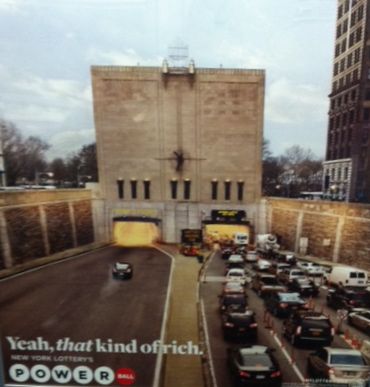
If you watch TV (online or otherwise), or ride the subway in New York, you’ve likely seen the recent Power Ball ads like this one, that implies if you win, you’ll have enough funds to do anything, anytime, anywhere.
I should first say that my relationship to the Lotto is not a familiar one — it’s one of those things that my grandmother participated in once a week for at least the latter part of her adult life, but I never really understood (because she never won). And looking at ads like this, or the Power Ball commercial where a woman reclines on a couch in her spacious living room and uses a remote to control what a live Cindy Lauper plays, makes a person wonder.
So why post about this on a blog that focuses on education and technology? At a time when tension in the country is only mounting around the economy (among other things), it’s not hard to explain to students at any instructional level that there are few circumstances that would ever allow for one car to travel, alone, through one of the busiest arteries in New York City while traffic builds up in the other tunnel — or, that hiring an ultra-famous band for personal use in one’s apartment is highly unlikely under most circumstances, but such logic goes agains the grain of images like these. I’ve obviously not researched this from an empirical standpoint, but as a New Yorker for more than 10 years, I can attest to being delayed on the subway, in traffic, or on foot, by closed streets for a variety of important-people-related reasons, but very few people actually have the funds to stop traffic as suggested by this ad — fewer, even, than the 1%.
So I guess that’s what is most significant to me about this image — that it harnesses, in some clever-yet-completely-false manner, the rhetoric of the Occupy movement (i.e., the 99% vs. the 1%). I’m sure it’s not the first time an ad for the Lotto has lied, but it’s the first time one has made me pause and wonder about how it’s playing off the current, public narrative around money (and by extension, class). Indeed, the very idea of ads is to sell, but where do we draw the line on hope vs. reality in a city where there are schools that don’t have the materials they need for basic instruction?
Comments by